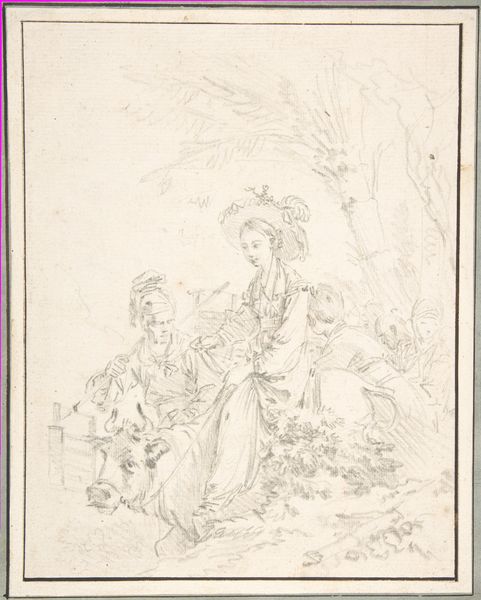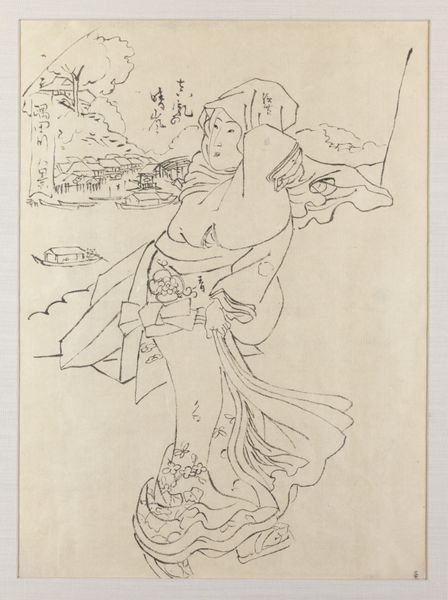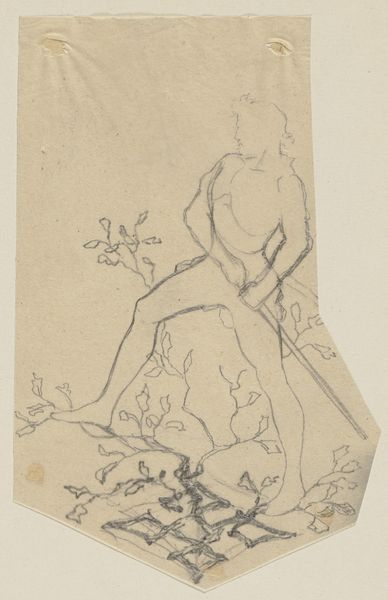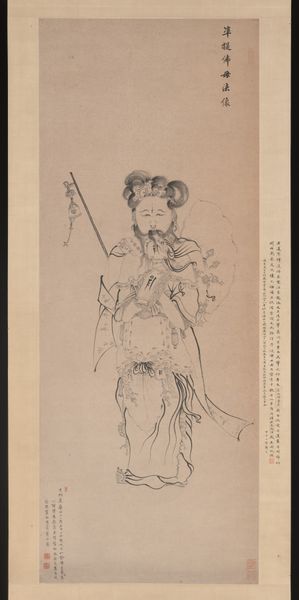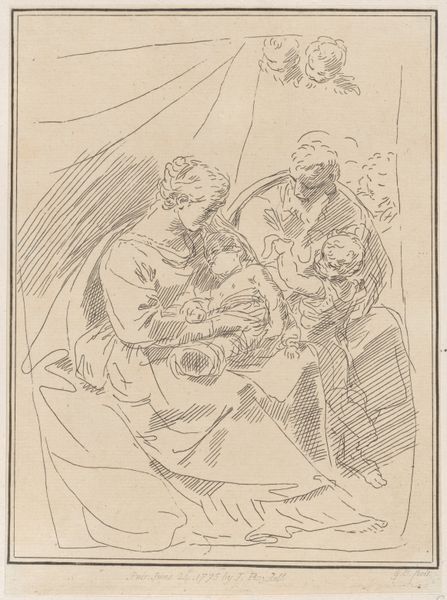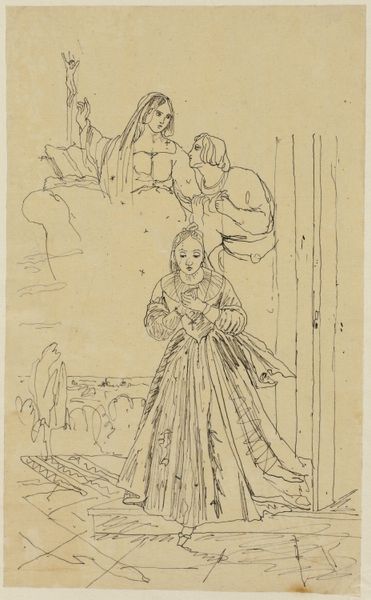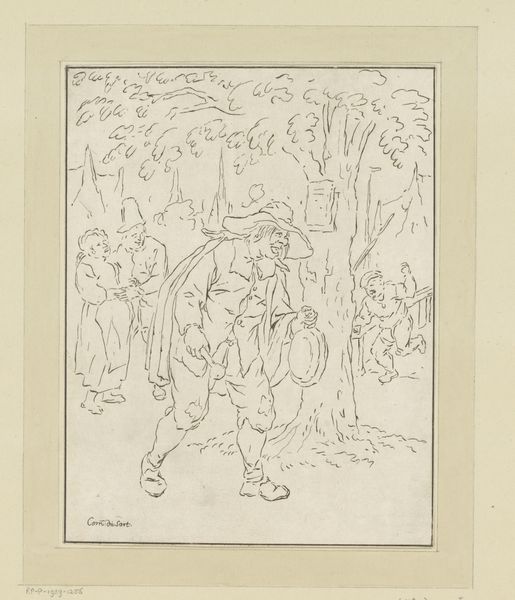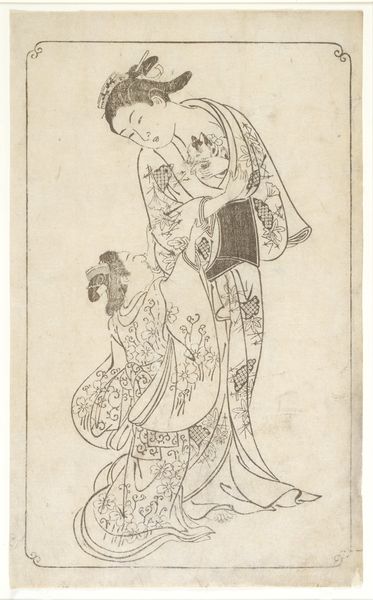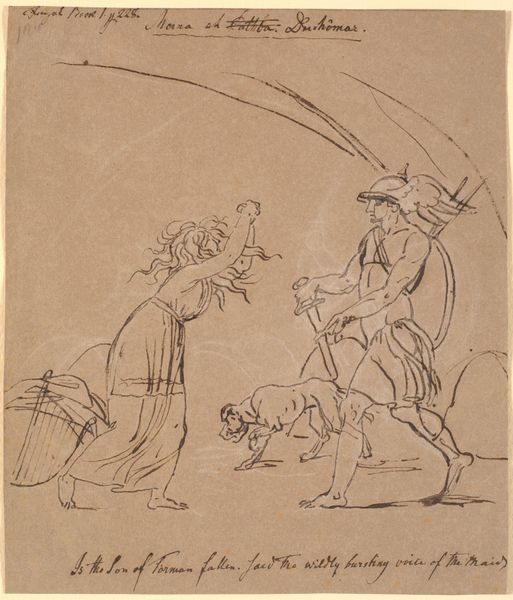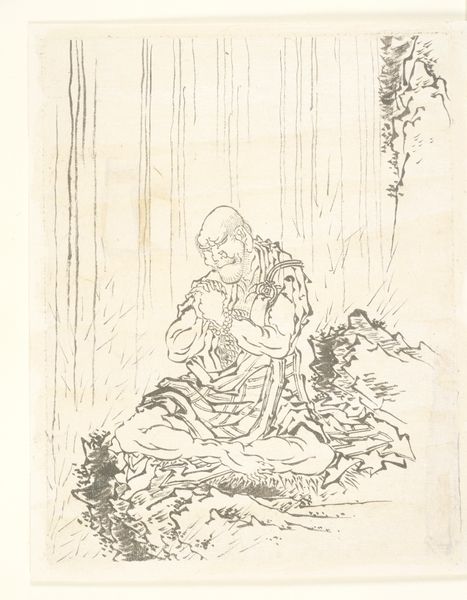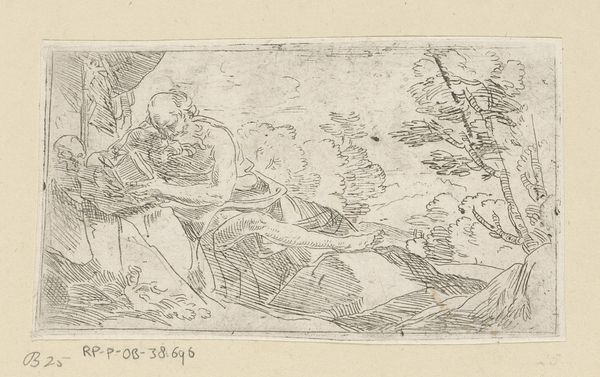
Preparatory drawing for the first print of the series The Ten Celestial Stems 1844
0:00
0:00
drawing, paper, pencil
#
drawing
#
ukiyo-e
#
japan
#
figuration
#
paper
#
pencil
#
line
Dimensions: 13 7/8 × 9 5/8 in. (35.24 × 24.45 cm) (sight)19 5/8 × 16 1/4 × 13/16 in. (49.85 × 41.28 × 2.06 cm) (outer frame)
Copyright: Public Domain
Curator: Immediately, I'm struck by the delicacy of this preparatory drawing; the pencil lines are so light and provisional. Editor: And that's quite fitting, given that what we're looking at is a preparatory drawing by Utagawa Kunisada, completed around 1844. It's for the first print in his series, "The Ten Celestial Stems," currently held at the Minneapolis Institute of Art. Curator: The composition centers around a seated figure, most likely a woman given the attire, and her focused attention on the flowering branch that she delicately holds, no? Editor: Indeed. This belongs to the ukiyo-e tradition, popular in Japan during the Edo period. The "floating world" it represents often featured idealized images of courtesans, actors, and landscapes. Note the faint mountain shape and crab form too. Curator: I see, now, what reads as a sense of provisionality of intention within that square compositional box. I do also appreciate how Kunisada guides the viewer’s eye through the meticulous placement and delicate treatment of line. It moves in the subject’s line of sight across the flowering bough to the decorative motifs, it feels meticulously balanced, if intentionally unfinished. Editor: Consider how prints were made back then, how a publisher would have commissioned the artist to make such a drawing, which would be used by specialist carvers and printers, who were vital to disseminating these designs to a broader public and thereby influencing popular fashions and taste. It wasn't about the unique artistic vision; Kunisada here is working within a highly commercial system, albeit achieving subtle variation within established styles. Curator: True. In the final print, the use of color, texture and line weights would radically transform what here is almost purely a study in line. It leaves us pondering about his creative process. Editor: From a historical perspective, Kunisada's preparatory drawing offers a glimpse into the complex interplay between artist, artisan, and consumer culture in 19th-century Japan. Curator: Absolutely. Examining its visual components certainly allowed us to extrapolate intention beyond mere line. Editor: And it’s contextual role emphasizes this, underscoring the commercial systems in art production.
Comments
No comments
Be the first to comment and join the conversation on the ultimate creative platform.
